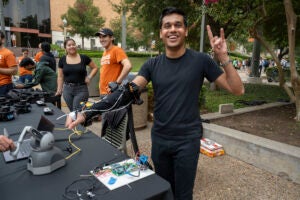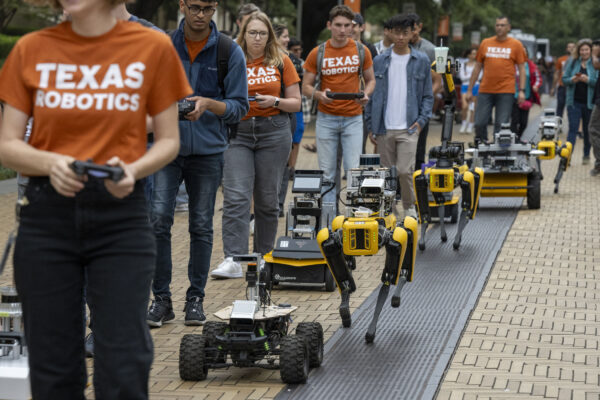A group of faculty and students marched from one end of Speedway to the other, as onlookers stopped — or followed — to take in a peculiar scene: a parade of robots.
Texas Robotics held its inaugural Robot Parade on Oct. 12, with members of its various research labs and student groups showcasing their walking, rolling, and sometimes spinning, robots. The group walked from Anna Hiss Gymnasium, where Texas Robotics is housed, to the Gregory Gymnasium Plaza.
The robots turned plenty of heads, but they weren’t out there just for show. The students and researchers who design, build and program the robots gave presentations about each one and their capabilities and purpose.
The mobile robots used in the parade included both wheeled and walking quadruped units, some of which were controlled by an augmented reality system. The presentation also featured non-mobile robots set up at different tables around the plaza, highlighting the varied projects researchers are working on, including robotic legs, drones and even a chess-playing robot.

Texas Robotics is an interdisciplinary program that brings together engineers and scientists across campus to advance robotics research and education, offering a graduate certificate, undergraduate minor and many collaborative research opportunities.
“A lot of what we’re trying to do is take robots out of factories and get them to interact with people in the real world, where they can navigate down a busy street, be autonomous, and help people,” said Peter Stone, professor of computer science and director of Texas Robotics. “We’re doing research on human-robot interaction, long-term autonomy and robot manipulation.”




